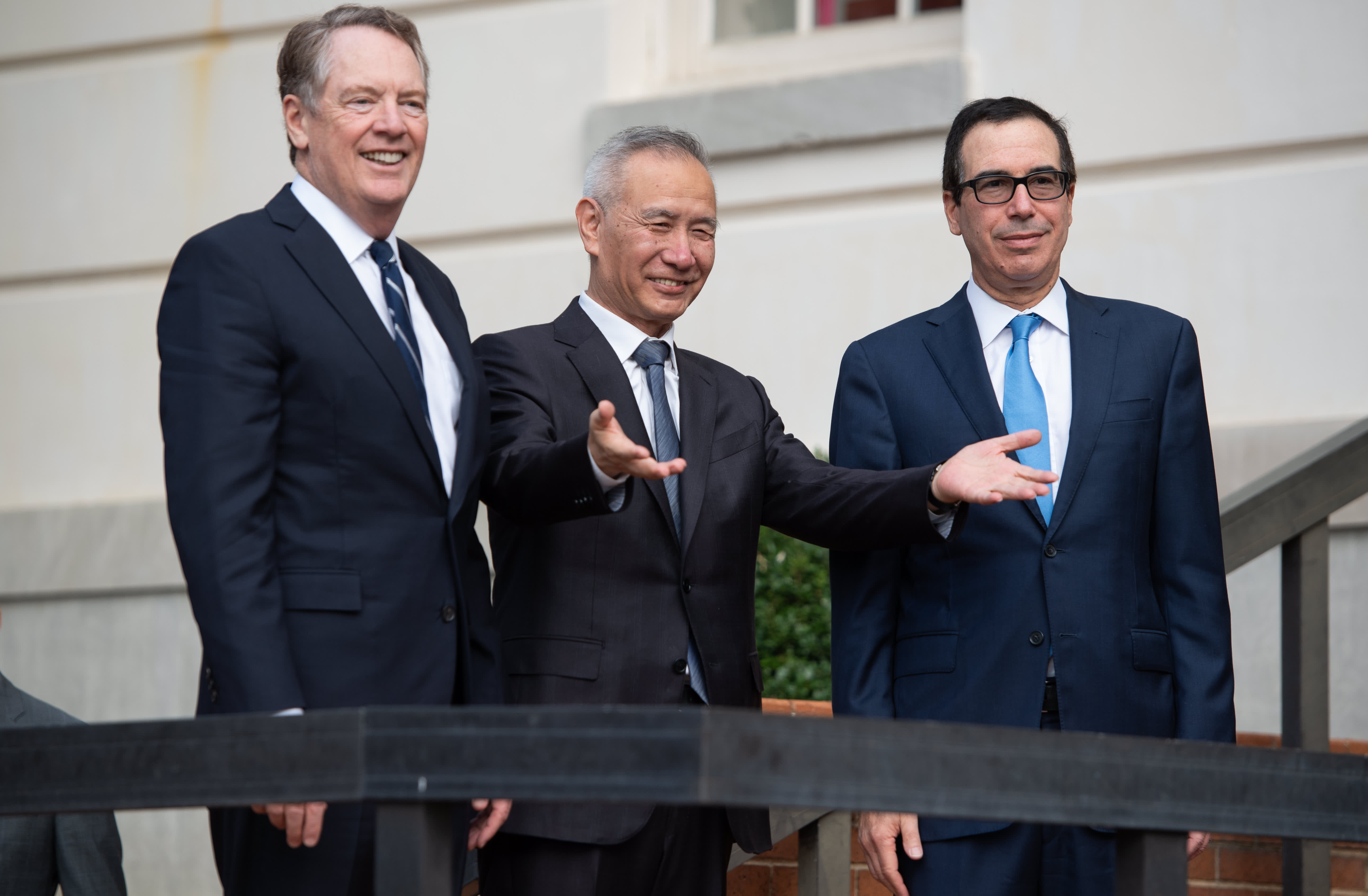The U.S. and China appear close to a limited trade deal, leaving more controversial issues for later.
The trade talks, which President Donald Trump said were “going really well,” extended into the second day on Friday. A slew of media reports suggested that the world’s two largest economies could agree to a partial agreement on issues such as currency and agriculture buying, and could also include a delay in the tariff hike scheduled for Tuesday.
Trump again gave an optimistic read on the talks on Friday, saying in a tweet “Good things are happening at China Trade Talk Meeting. Warmer feelings than in recent past.”
Day two of the talks now includes a key meeting between Trump and Chinese Vice Premier Liu He, scheduled for 2:45 p.m. ET. The additional meeting renewed hopes for progress as past meetings between the two have yielded a delay in tariffs and agriculture buying.
A mini deal?
Washington is seeking pledges from Beijing to refrain from currency manipulation and more agriculture buying. In return, the U.S. would offer a suspension of a tariff increase, Bloomberg News reported, adding it would be a deal the U.S. and China were close to agreeing on in previous talks.
Reuters and The New York Times also reported on a mini deal that includes a currency agreement and tariff delay.
The Times also said the Trump administration plans to allow the sale of some supplies to Huawei, the giant Chinese telecom. The administration has restricted sales to Huawei in May due to concerns about national security.
Bigger issues including protections against Chinese theft of U.S. intellectual property and forced technology transfer might be saved for later talks.
However, Senate Minority Leader Chuck Schumer, D-N.Y., expressed opposition to a mini deal that includes relief for Huawei, which he said would “show tremendous weakness.”
China removes foreign ownership limits
China overnight set a clear a timetable for opening its finance industries.
The China Securities Regulatory Commission said Friday overseas financial service companies in futures, securities and mutual funds will be able to apply for total control of onshore ventures starting in 2020.
The move came as the country speeds up plans to open up the financial sector. China scrapped those foreign ownership limits a year earlier than originally planned, state-run media agency Xinhua said.
‘A more feasible objective’
A Chinese newspaper also struck an upbeat tone on the prospect of a partial deal, further fueling the optimism of a short-term resolution.
“A partial deal is a more feasible objective, and one that would be in the common interests of both sides,” China Daily said in an editorial Friday.
“Not only would it be of tangible benefit by breaking the impasse, but it would also create badly needed breathing space for both sides to reflect on the bigger picture than who does what to please the other,” it said.
China Daily is an English daily newspaper owned by the Publicity Department of the Communist Party of China.
To be sure, the two countries have been down this road before. In February, they reached an agreement that would limit China’s ability to manipulate its currency, but no details were ever made public. Then the broader trade talks broke down in May, resulting in more tariffs and China letting its currency weaken to a key level.
